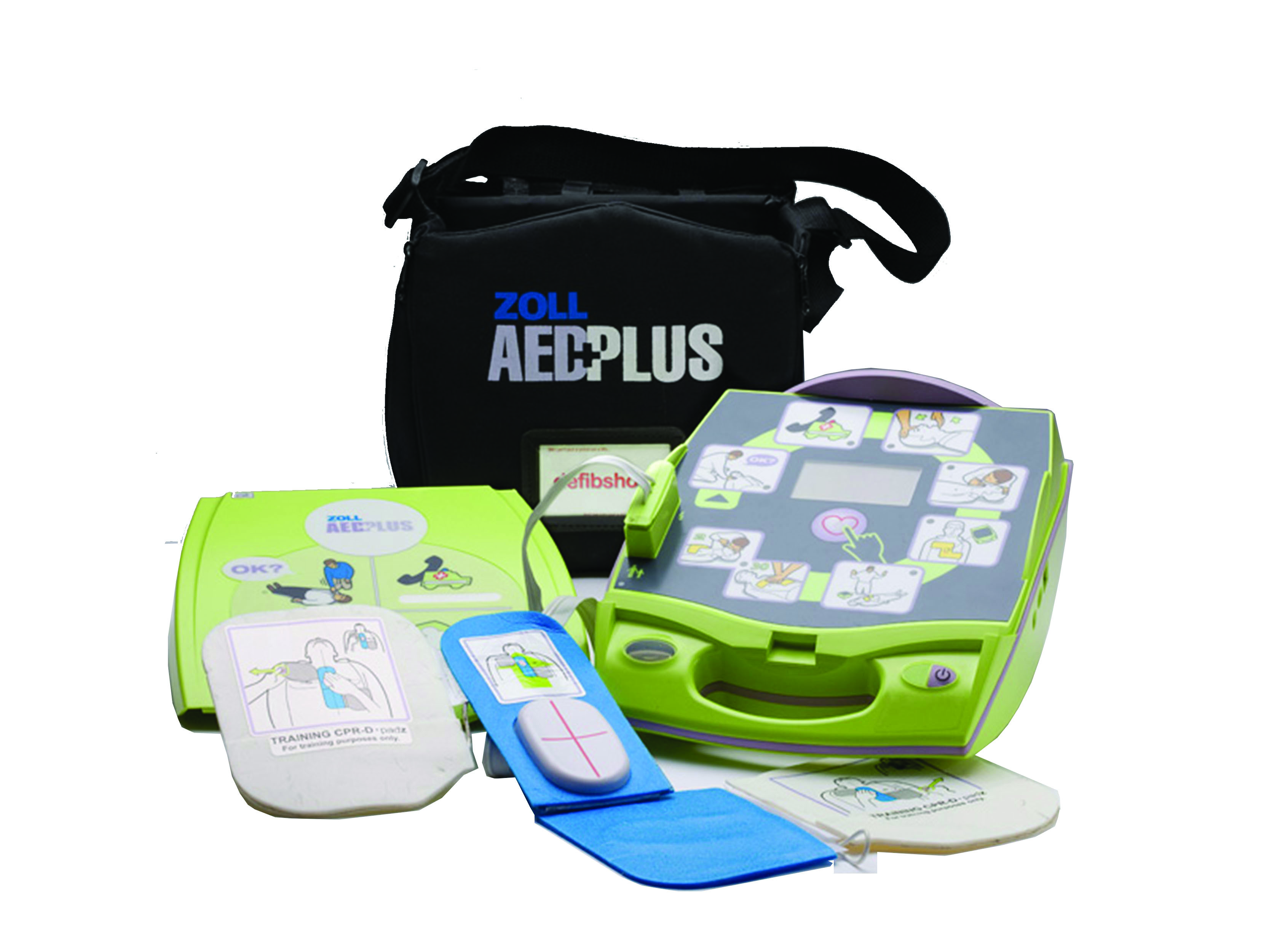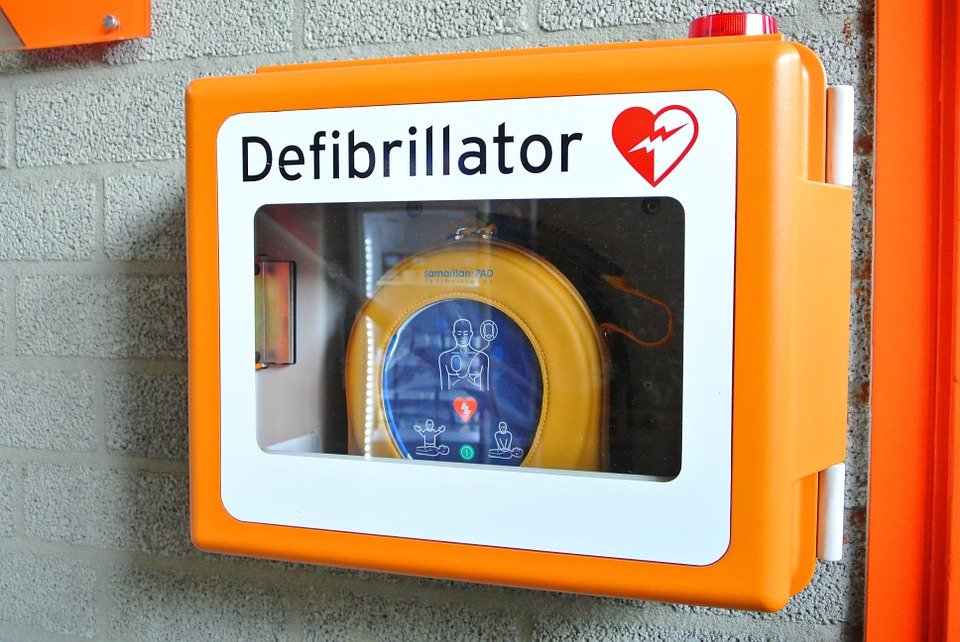Friday take five: Medical emergencies at work

The safety and well-being of employees should be a main priority for any business. With HSE estimating 1.2 million people suffering from a work-related illness and 142 workers killed at work in the past year alone, the health and safety of employees is something that needs to be taken seriously in every workplace.
Staff should feel safe in their place of work and this involves providing a secure working environment that’s free from danger, alongside the relevant skills and equipment needed in order to respond to any medical emergencies.
In order to make sure your workplace is covered and you are providing a safe environment for employees, you must be aware of the key regulations which are vital for the protection of your staff.
First Aid
Every business is required by law to provide basic care and treatment for members of staff who are injured or become ill at work. The minimum requirements for first aid provisions in any workplace is to provide a well-stocked and regularly maintained first aid kit, a designated first aider to take charge and clearly visible information for employees regarding first aid arrangements.
A first aid kit should contain items such as plasters, bandages, medical tape and gloves as a minimum. Medicines and drugs should not be kept in your first aid kit and instead stored separately in a safe place.
Your workplace will have to undergo a health and safety assessment to determine what equipment it will need to be legally safe.
Certain working environments will need extra equipment and specific items to comply with HSE legislation. For example, kitchens will require blue plasters as they are more visible if they fall into food and extremely hazardous working environments must provide extra equipment to deal with serious injuries such as burns or severe cuts.
Defibrillators
Having a defibrillator on your business premises is not currently a legal requirement, but when you take a look at the statistics it becomes apparent that it should be.
A defibrillator is a device that analyses a person’s heart rhythm following a cardiac arrest. When connected to the casualty using electrodes, the defibrillator will automatically search for a shockable rhythm to try and restore the victim’s regular heartbeat. They are designed to be used by anyone who arrives first on the scene of a cardiac emergency; a cardiac arrest can affect anybody regardless of age, lifestyle or gender. Without defibrillation, chances of survival after a SCA are decreased by 10% every minute.

Defibrillators are designed so that everyone can use them, even without full training. All devices include clear visual instructions or spoken assistance; however it is always useful to offer your staff training so they can act with confidence in an emergency.
Fire safety
The Regulatory Reform (Fire Safety) Order 2005 requires businesses to make sure their fire safety procedures are up to government standards. Without adequate fire safety provisions, you face a hefty fine or even imprisonment for putting staff and your workplace at risk.
When fitting fire extinguishers, it’s essential they’re present throughout your business premises and that you have the correct extinguisher to suit your needs. For example, a water fire extinguisher would only be used for wood, paper and textile materials, which suits most office environments.
By law, you’re required to have evacuation procedures in place for your staff to follow. Set this out in writing and operate regular drills so that everybody is well-trained on the best course of action should a fire occur on your premises.
Fire alarms and exit signs need to be clear and easy to spot, with a designated fire marshall appointed to oversee the procedure and ensure everyone stays calm.
Training
There are also a number of health and safety procedures that need to be adhered to. Different working spaces will have their own set of policies they need to follow, for example, a company using chemicals for cleaning will need to follow the Control of Substances Hazardous to Health (COSHH) procedures.
It is important that both employers and employees are trained on following correct procedures in order to have a safe workplace. For example, those in the food industry will need to understand the core principles and importance in storage practises and safe handling of food.
Training sessions should be held regularly so that staff can remain aware of the latest and correct procedures that are in place in their industry.
Inspections
Workplaces are required to be inspected regularly to ensure that potential hazards are highlighted and addressed before they pose a danger to staff. How often an inspection is needed will depend on the industry of your business and more hazardous environments will require more frequent inspections.
Alongside health and safety inspections and risk assessments, it’s also crucial that appliances and machinery are checked annually. Portable Appliance Testing (PAT) is required in order to ensure that electrical appliances are safe to use. In low-risk environments, sensible members of staff with knowledge and training can undertake an inspection but trained and professional electricians are best suited to this practice.
With the HSE estimating a £14.3 billion expenditure each year on injuries and ill health from poor working conditions, it’s important that the correct safety measures are in place to avoid the risk of injury. Failure to do this means your business faces spending additional time and money having to rectify errors, contributing to an unmotivated and unhappy workforce, who don’t feel safe in their job.
Adam Maidment is a guest blogger from defibshop, the UK’s leading independent defibrillator supplier. Check out their Safe Workplace Checklist for more information on how to keep your employees safe.
Friday take five: Medical emergencies at work
The safety and well-being of employees should be a main priority for any business. With HSE estimating 1.2 million people
Safety & Health Practitioner
SHP - Health and Safety News, Legislation, PPE, CPD and Resources Related Topics
Legal insight: Common errors in fire safety
Tall Buildings High Rise Construction Fire Safety Conference call for papers
Lithium-ion battery fire risks – What you need to know (part three)



Although Portable Appliance Testing is good practice, it is not a requirement. It is merely one element of the actions needed to meet the legal requirement which is in fact to maintain all systems so as to prevent, so far as is reasonably practicable, danger (Electricity at Work Regulations 1989). Depending on what other measures are in place, PAT testing may not be necessary at all.